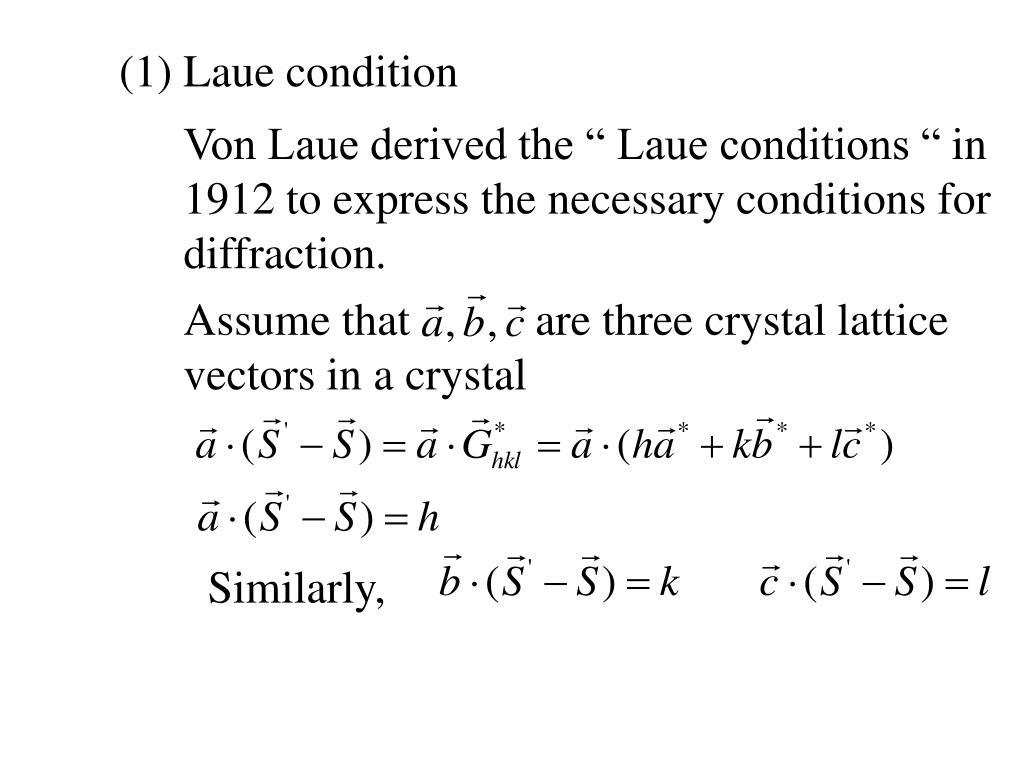

We restrict this study to Laue's initial idea about the nature of the interference effect.

199–220) provide insights from a variety of different perspectives – and yet there remain questions that cannot be resolved unequivocally from the available archival sources. The Nobel speeches of the discoverers, Ewald's voluminous Festschrift for the semicentennial, Forman's critical scrutiny together with Ewald's refutation, and further accounts (see Wheaton, 1983, pp. The latter are concerned with the nature of X-rays and the space-lattice hypothesis of crystals as known before the discovery the former concerns the lack of documentary evidence – letters, diaries, manuscripts – from the crucial period in spring 1912. The complexity is due to historical as well as scientific aspects. 81).įrom these passages it is apparent that a review of the discovery of X-ray diffraction in crystals in a short article cannot cover the disputed issues in a comprehensive manner.

These unjustified accents, needed in support of his main thesis, show that his scheme is pre-conceived, artificial, and unnecessary” (Ewald, 1969, p. To make his interpretation plausible, the author repeatedly aggrandizes statements taken from the literature, especially from Laue's Nobel Lecture and from the Festschrift for the semicentennial of the discovery. In turn, Ewald regarded this interpretation as “the myth of the myths.” Forman failed, in Ewald's view, “to appreciate the vagueness of the physical information confronting Laue before the experiment. “This circumstance, and its evident social function of reinforcing a separate identity, strongly suggests that the traditional account may be regarded as a `myth of origins,' comparable to those which in primitive societies recount the story of the original ancestor of a clan or tribe” (Forman, 1969, p. Ewald's Fifty Years Festschrift, dedicated to the International Union of Crystallography, and other celebratory reviews of the events in 1912, according to Forman, served the purpose of maintaining a disciplinary identity among the crystallographers. The science historian Paul Forman challenged the `clan of X-ray crystallographers' with a `critique of the myths' that he discerned in their accounts of the discovery. The reconstruction of the events that led to Laue's idea in 1912 have provoked critical scrutiny. Few other discoveries received such swift recognition and widespread praise.

The pioneers were awarded with the Nobel Prize in physics as early as 19: Max von Laue, who had suggested in spring 1912 the – now famous – experiments performed by Walter Friedrich and Paul Knipping, `for his discovery of the diffraction of X-rays by crystals' William Henry Bragg and William Lawrence Bragg, father and son, `for their services in the analysis of crystal structure by means of X-rays' (Nobel Prizes, 1914–1915 ). Ewald's Fifty Years of X-ray Diffraction (Ewald, 1962 ). The discovery of X-ray diffraction in crystals a hundred years ago, and the ensuing birth of the new specialities of X-ray spectroscopy and X-ray crystallography, have been praised and reviewed on numerous occasions, most extensively half a century ago in P.


 0 kommentar(er)
0 kommentar(er)
